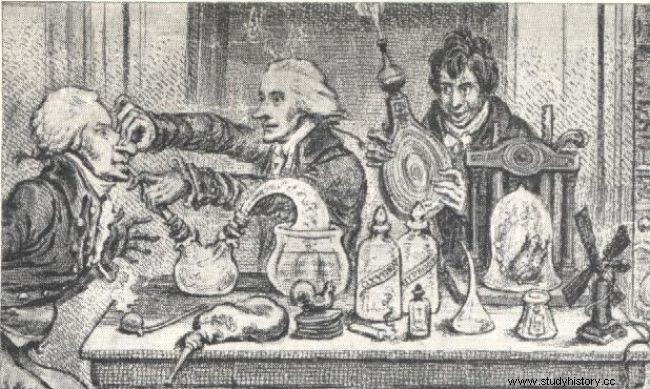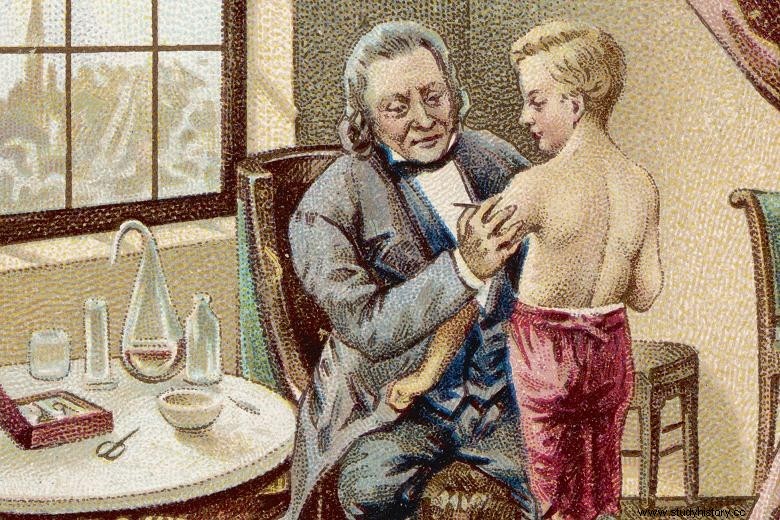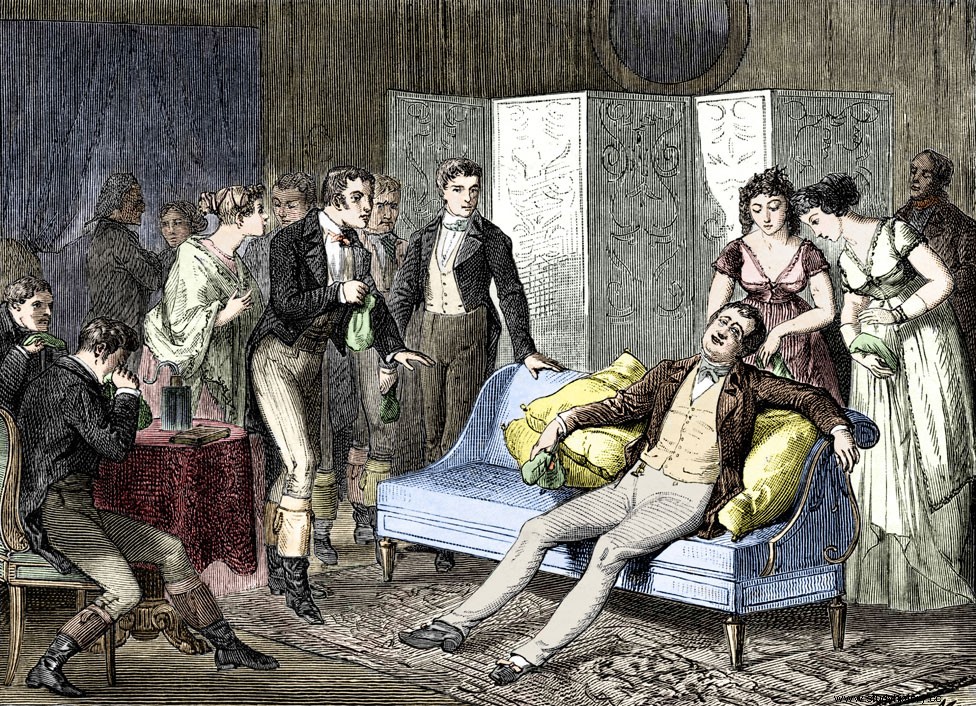The promising career of the young Thomas Beddoes -graduated in Medicine and Chemistry, enthusiastic botanist, able to translate texts in Latin and Greek, speak English, French, German, Italian or Spanish, and even become an expert in Vedic and Brahmanical texts from India-, was cut short partly because of certain eccentricities and because of his criticism of English society against his admired revolutionary France. Come on, what is said "people skills", did not have. In medical matters, he had a certain obsession with the inhalation of gases to cure certain contagious diseases. Despite some setbacks experimenting with rabbits, kittens and even himself, he was convinced that his revolutionary therapy would transform human life and that, sooner or later, every home would have a small device for the production of necessary and beneficial gases. to health. Optimism was not lacking.

During the years of studying him, Thomas realized that those who worked with cows were less prone to tuberculosis, and concluded that this must have something to do with the fumes and gases inhaled in the stables. According to the conclusion of his study, it would be beneficial for tuberculosis sufferers to breathe the exhalations from a cowshed. Said and done. In 1793 he moved several of the patients from his clinic in Bristol, England, to a building adjoining a stable, where cows poked their heads through a curtain into the sickbeds, letting them inhale his breath. . And not only that, but he also defended his method because the stable provided a very pleasant temperature. The scientific community did not know whether to laugh or cry. Ironically, and despite his enthusiasm for "bovine medicine", Thomas remained skeptical of the work of the English physician Edward Jenner , to which, now yes, we owe the discovery of the smallpox vaccine and, by extension, of vaccines in general. Paradoxically, despite being recognized as a benefactor of humanity, Jenner was never admitted to the British Royal College of Physicians.

Thomas Beddoes followed suit and in 1799 started Pneumatic Institution , a center for further research with gases. One of the first assistants he hired was a 20-year-old named Humphry Davy , that he showed an unusual enthusiasm from the first day. As much or more than Thomas himself. In fact, before long he was already experiencing the effects of the gases by inhaling them himself. And I don't know how he felt like it, because he was about to go to the other neighborhood. It seems that he got between his chest and back more than 4 liters of carbon monoxide!!! That first setback was not a problem for him and he continued working with the gases and experimenting on his own body. Davy managed to synthesize nitrous oxide or dinitrogen monoxide and, logically, he tested it...
A very pleasant emotion, especially in the chest and extremities […] the objects around me dazzled me and my sense of hearing sharpened, my pulse increased, it made me dance around the laboratory like a madman and has kept my spirits up resplendent ever since.

Everyone who tried it experienced a trip to a parallel world of fantasy and color. That gas, volatile, colorless, with a sweet and slightly toxic odor, was none other than the so-called laughing gas. . Leaving aside the euphoria and hallucinations, Davy was looking for medical utility and, since it eliminated pain, he intuited that it could be of great use in surgical operations, but the medical potential of laughing gas was lost. It was not until the middle of the 19th century that first dentists and later surgeons began to use it as an anesthetic.
